Adriacom I Business Services & Immigration
Montenegro Awaits - Let's Make it Yours.
Kotor Fortress
Visiting Kotor and not climbing up St. John’s / San Giovanni Fortress is like going to Rome and not bothering to see the Colosseum. And while the fort itself lies in ruins – just like the Colosseum – hiking up the 1,350 steps to experience the breathtaking panoramic bay views is one of the most rewarding things you can do during your Montenegro trip.
Controlling the Bay of Kotor leading into town, the imposing Kotor Fortress spreads along a karst limestone bluff, reaching 290 meters at its highest point. Owing to its strategic location, the fortress has ever since Illyrian times been an important defensive position. When the Romans invaded and established Kotor as Ascrivium in 168 BC, they only had to rehabilitate and improve already existing structures.
Table of Contents
ToggleInfo: There are three different names, all meaning the same thing. Kotor Fortress = San Giovanni Fortress = St. John’s
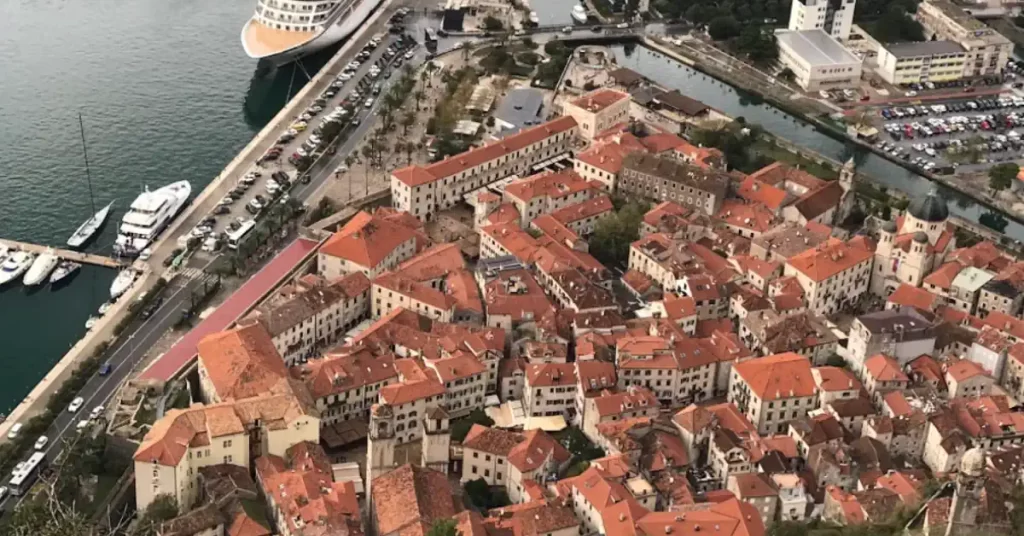
Kotor
Kotor is filled with well-preserved historic buildings and is buzzing with great cafes and restaurants. Visit Kotor for the utmost Mediterranean experience.

Bay of Kotor
Visit the Bay of Kotor, Europe’s southernmost fjord, for the utmost Mediterranean experience, appealing year-round to tourists and residents.
The Eastern Roman Emperor Justinian I commissioned the reconstruction of the fortress in the 6th century. Over the next 1,000 years, it served as a crucial stronghold of the Byzantines and many of Montenegro’s and Serbia’s kings, finding itself on a key intersection between the Mediterranean and Montenegro’s mountainous interior.
The Ottoman advances in the Late Middle Ages posed a significant threat to the entire region, and the San Giovanni Fortress stood along the route by which the Ottomans could penetrate the mountain barrier toward the then-capital Cetinje. During the Ottoman Siege of Risan and Herceg Novi in 1539, Kotor Fortress played no small part in successfully rebuffing the attacks of the Ottoman army that were led by Hayreddin Barbarossa.
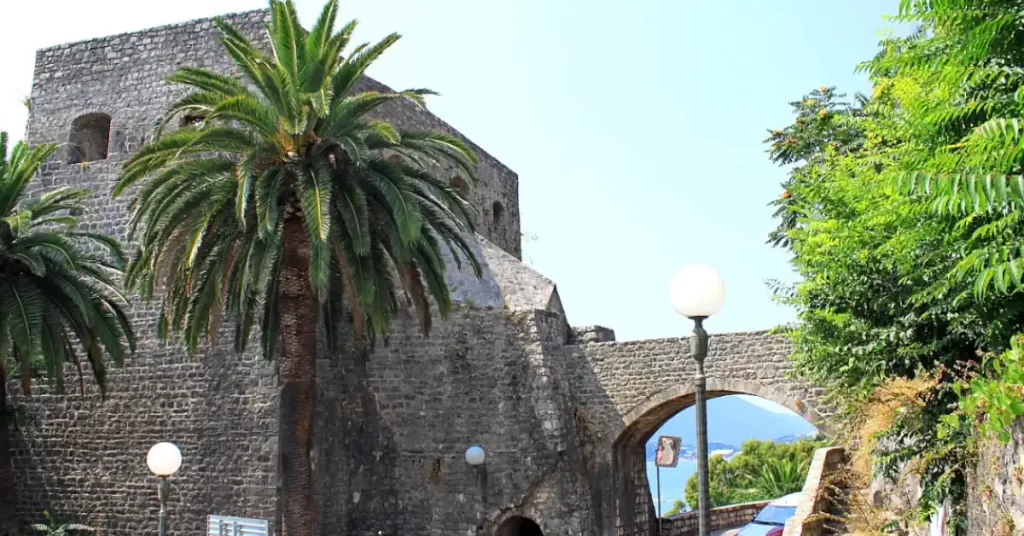
Herceg Novi
Kanli Kula, Forte Mare, Spanjola, the landscape around Herceg Novi is dotted with beautiful fortresses. This charming town is well worth a visit!

Risan
Founded by the Illyrians more than two millennia ago, Risan is the oldest settlement in the Bay of Kotor. It sits between Perast and Herceg Novi.
During the Venetian Period (1420 – 1797), existing fortifications were all substantially rebuilt. Various bastions, ammunition depots, and guard posts were incorporated into the city walls. Thanks to these facilities, the Kotor Fortress could function autonomously for long periods, which was particularly crucial during sieges and invasions.
Back in the day, there were four churches built into Kotor’s city walls, acting both as a place of worship for the stationed troops and as part of the city’s defenses. The Church of Our Lady of Remedy is the only one that remains. The building of St. John’s coincided with a period of great prosperity for Kotor – based on maritime trade and shipbuilding. The city walls and Kotor Fortress are listed as one of Montenegro’s UNESCO World Heritage Sites.

Kotor’s City Walls
Kotor’s City Walls have been listed as a UNESCO World Heritage Site since the earthquake of 1979. They measure 4,5 kilometers and surround Kotor’s Old Town.
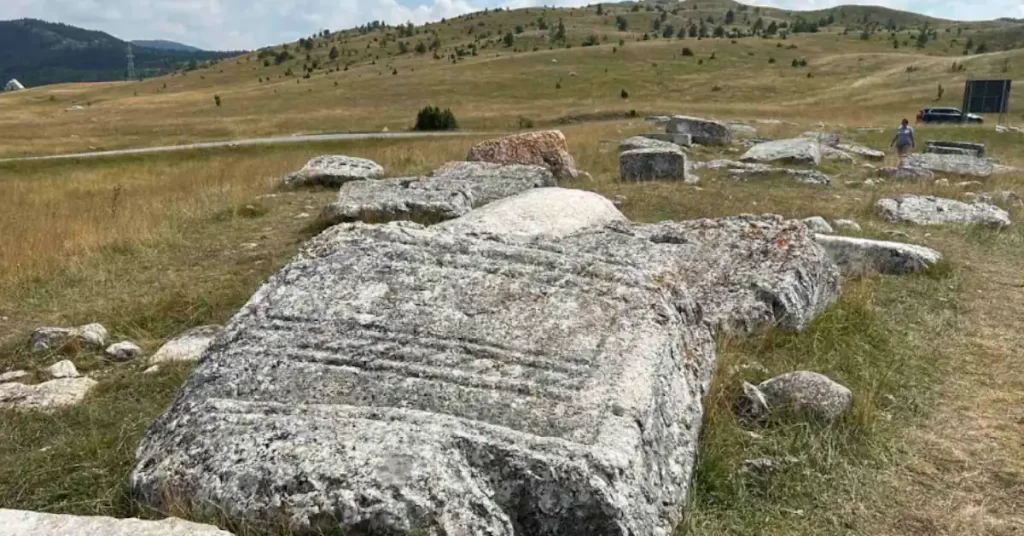
UNESCO Sites in Montenegro
Find out more about all UNESCO sites in Montenegro, from the Durmitor National Park and the Venetian Works of Defense to the culturo-historical region of Kotor
The Kotor Fortress Hike
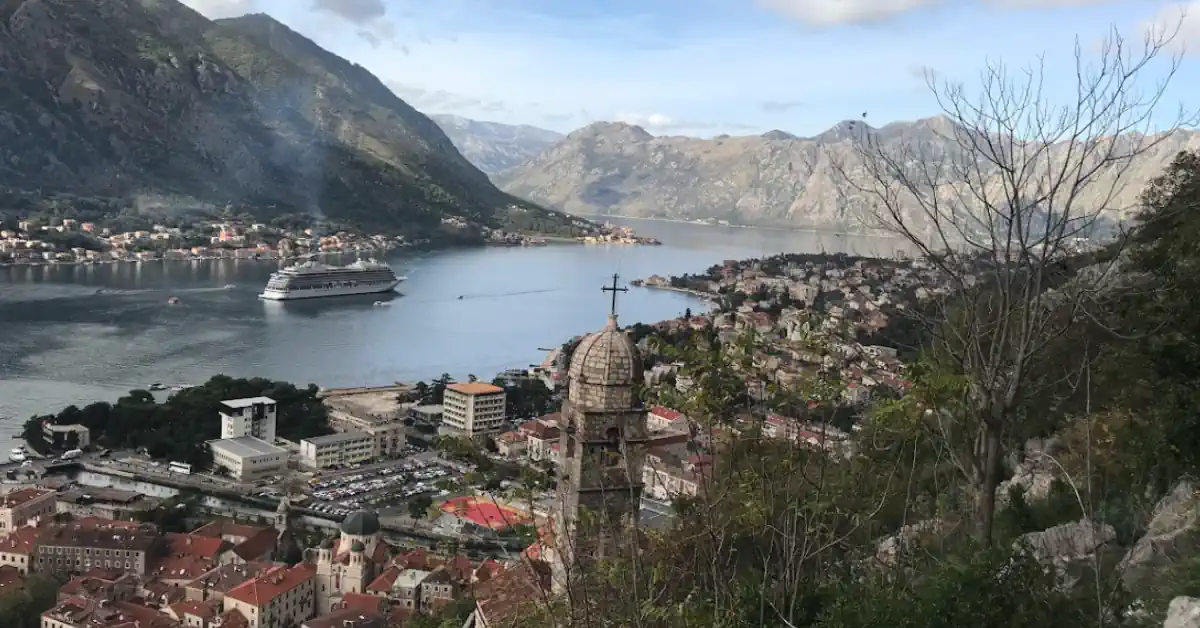
The Kotor Fortress Incline is popular due to its historic charm and unparalleled scenery. Hiking up the thousand-year-old stone pathway feels like you’re going back in time. En route, there are plenty of fantastic photo spots with great views of the Bay of Kotor and Kotor’s Old Town.
About halfway to the top, after 650 steps or so, sits the Church of Our Lady of Remedy, a 16th-century Catholic church that is seamlessly integrated into the ramparts system. This is a reasonable milestone for everyone with less than optimal fitness levels and views from here are already superb.
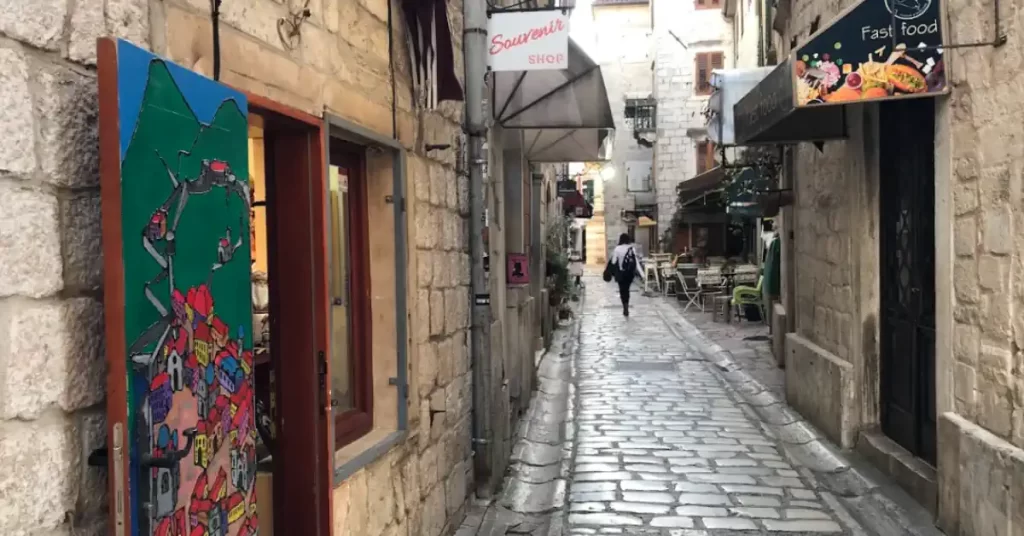
Kotor Old Town
Meander through charming cobbled lanes and soak up the vibe in Kotor’s Old Town. Discover unique restaurants, museums, and small shops.

Climb the remaining 700 or so steps and you will arrive at the San Giovanni Fortress which towers 280 meters high above Kotor with its magical terracotta roofs and docked cruise liners that look miniscule from here. For taking stunning pictures, you should consider walking up during the magic hour – one hour before sunset.
Here is some general guidance:
- wear good sturdy shoes as the weathered stone stairs get slippery when wet, especially on the route down
- there are no toilets along the way
- during the summer months, it is best to go early to avoid crowds and the scorching summer heat; there is almost no shade along the way
- take a bottle of water with you
Any reasonably fit person should be able to complete the ascent to Kotor Fortress in about 45 minutes to one hour. This will leave sufficient time for taking pictures and enjoying the scenery. The hot weather in July and August makes traversing the 280 vertical meters more strenuous than it should be.
The breathtaking views from atop will remind you how beautiful this part of Europe is. You can look as far as the Verige Strait, which connects the inner to the outer Bay of Kotor. The fortress (actually what remained of it) is still interesting and intriguing for visitors to explore. On the other side of the city walls, you’ll find the Church of Sveti Juraj, which is worth exploring in its own right.
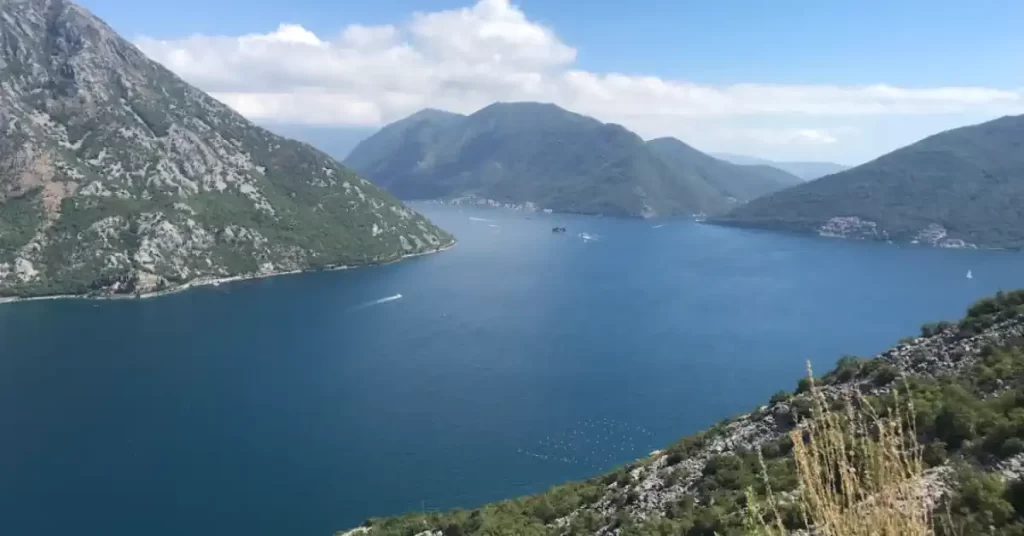
The Verige Strait
The Verige Strait constitutes the Bay of Kotor’s narrowest choke point through which boats and cruise ships have to pass on their way to Kotor and Perast.
The Trailheads
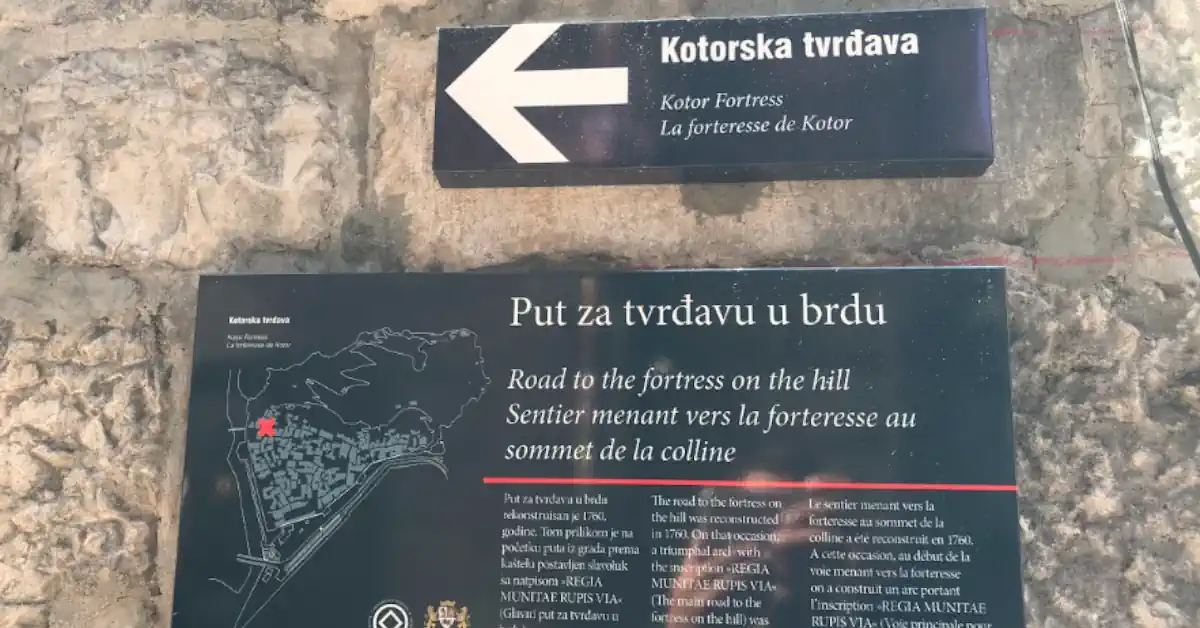
There are two starting points for hiking the city walls up to the Kotor Fortress: the main trailhead opposite the Church of St. Mary Collegiate and the trailhead close to Kotor Cathedral. From there, follow the signs towards the pay booth, where you can purchase tickets.
Entrance Fee & Opening Hours
Kotor Fortress is open to visitors! A regular ticket costs 15€ per person. Free admission for children under 12 years of age. There are no family tickets or audio guides for hire. Payment is only possible in Euros (cash or card) – you pay at the pay booth.
Info: You can also book a guided tour in Montenegrin, English, and other languages for organized groups – this is subject to prior reservation.
Opening Hours: 7 am – 8 pm
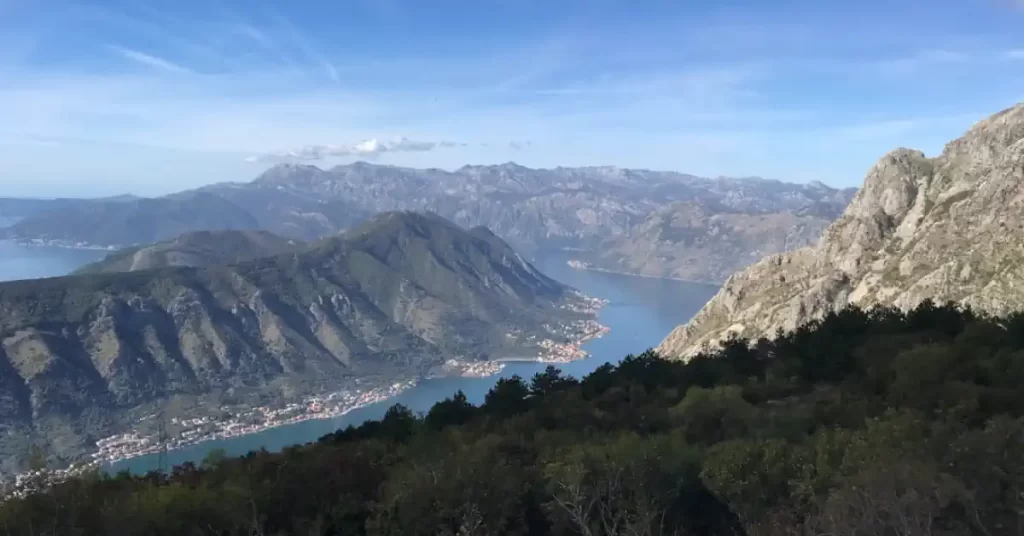
The Ladder of Kotor
The Ladder of Kotor is an arduous day hike up to the Krstac Pass, with an elevation gain of more than 1,000 meters. Views from above are breathtaking.
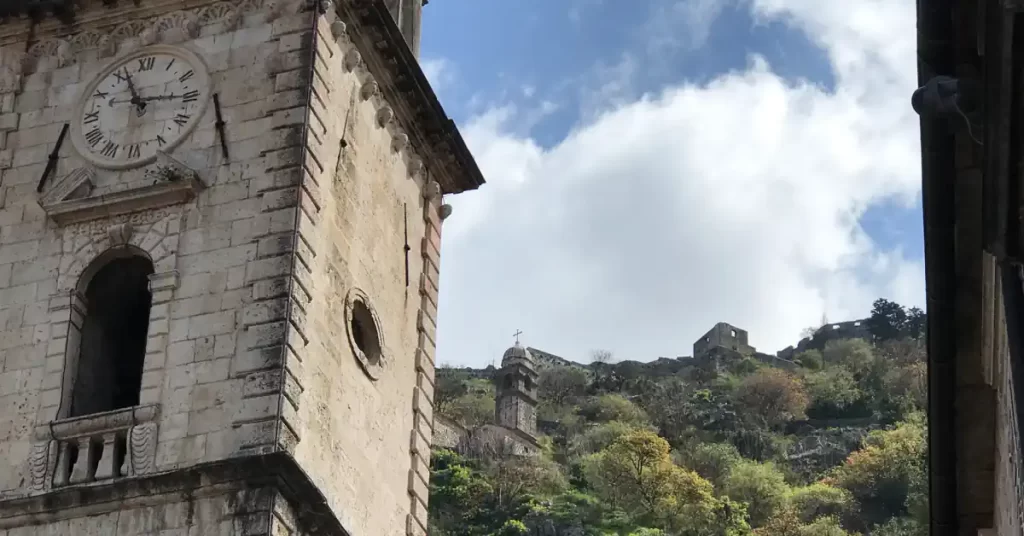
Things to do in Kotor
Here is a list of things to do in Kotor. Find out which are the most significant places, activities, and venues of this beautiful medieval city.